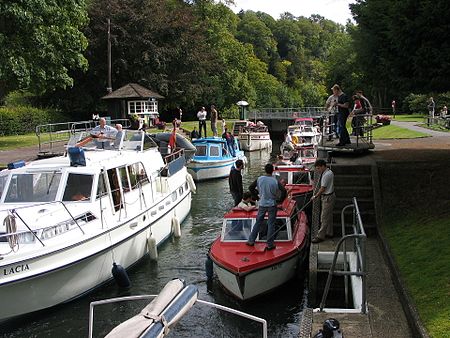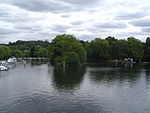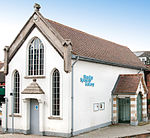Cookham Lock

Cookham Lock is a lock with weirs situated on the River Thames near Cookham, Berkshire, about a half-mile downstream of Cookham Bridge. The lock is set in a lock cut which is one of four streams here and it is surrounded by woods. On one side is Sashes Island and on the other is Mill Island connected to Formosa Island, the largest on the non-tidal Thames. There are several weirs nearby. Hedsor weir was placed across the old navigation channel in 1837, seven years after the lock was opened. There is a lower weir, and Odney weir is on the channel next to Formosa Island. A short distance away from the lock is Odney, with the Odney Club situated on an ait. Navigation to the Odney Club by boat is possible, but is extremely difficult due to the shallow waters. It is thought that this is deliberate - to disallow non-members from entering the club site without paying the entrance fees.
Excerpt from the Wikipedia article Cookham Lock (License: CC BY-SA 3.0, Authors, Images).Cookham Lock
Odney Lane,
Geographical coordinates (GPS) Address Phone number Website Nearby Places Show on map
Geographical coordinates (GPS)
| Latitude | Longitude |
|---|---|
| N 51.5613 ° | E -0.695442 ° |
Address
Cookham Lock Campsite
Odney Lane
SL6 9SR
England, United Kingdom
Open on Google Maps









